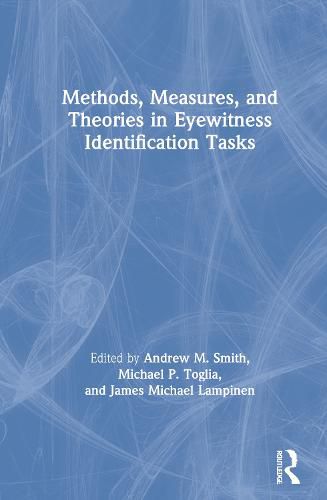Readings Newsletter
Become a Readings Member to make your shopping experience even easier.
Sign in or sign up for free!
You’re not far away from qualifying for FREE standard shipping within Australia
You’ve qualified for FREE standard shipping within Australia
The cart is loading…






Methods, Measures, and Theories in Eyewitness Recognition Tasks provides a comprehensive review of the fundamental issues surrounding eyewitness recognition phenomena alongside suggestions for developing a more methodologically rigorous eyewitness science.
Over the past 40 years, the field of eyewitness science has seen substantial advancement in eyewitness identification procedures, yet theoretical and methodological developments have fallen behind. Featuring contributions from prominent international scholars, this book examines methodological and theoretical limitations and explores important topics, including how to increase the accuracy of identifying perpetrators when using CCTV images, how to create more identifiable facial composites, and the differences in accuracy between younger and older eyewitnesses.
Providing in-depth discussion on the limitations of traditional lineups, eyewitness memory fallibility, and the complications that arise when using laboratory simulations, along with suggestions for new methods, this book will be an invaluable resource for researchers in eyewitness recognition, lawyers, players in the criminal justice system, members of innocence commissions, and researchers with interests in cognitive psychology.
$9.00 standard shipping within Australia
FREE standard shipping within Australia for orders over $100.00
Express & International shipping calculated at checkout
Methods, Measures, and Theories in Eyewitness Recognition Tasks provides a comprehensive review of the fundamental issues surrounding eyewitness recognition phenomena alongside suggestions for developing a more methodologically rigorous eyewitness science.
Over the past 40 years, the field of eyewitness science has seen substantial advancement in eyewitness identification procedures, yet theoretical and methodological developments have fallen behind. Featuring contributions from prominent international scholars, this book examines methodological and theoretical limitations and explores important topics, including how to increase the accuracy of identifying perpetrators when using CCTV images, how to create more identifiable facial composites, and the differences in accuracy between younger and older eyewitnesses.
Providing in-depth discussion on the limitations of traditional lineups, eyewitness memory fallibility, and the complications that arise when using laboratory simulations, along with suggestions for new methods, this book will be an invaluable resource for researchers in eyewitness recognition, lawyers, players in the criminal justice system, members of innocence commissions, and researchers with interests in cognitive psychology.